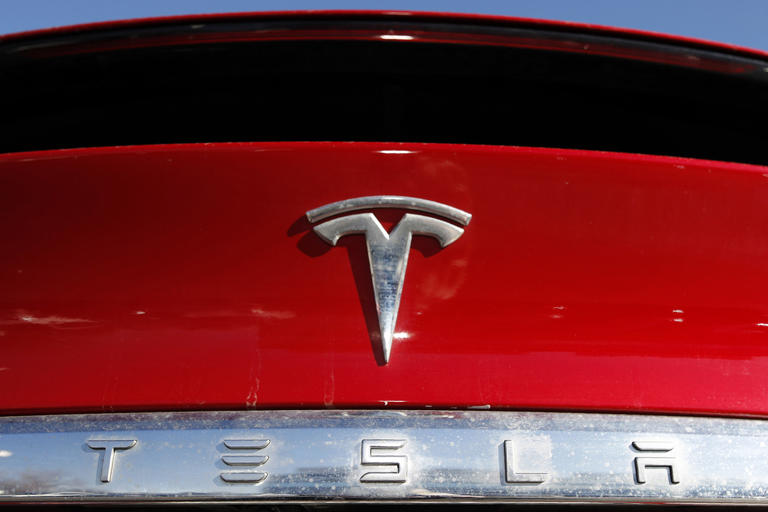Tesla’s second-quarter financial results reveal a sharp downturn in profitability and ongoing challenges despite strategic efforts to bolster market performance. The company reported a dramatic 45% decline in net income, amounting to $1.48 billion from April through June 2024, compared to $2.7 billion in the same period last year. This significant drop underscores a second consecutive quarterly decrease in net income for Tesla, highlighting a period of financial strain amid fluctuating market conditions.
Revenue for the second quarter increased by 2%, reaching $25.5 billion, surpassing Wall Street’s forecast of $24.54 billion. Despite this growth, the company’s earnings per share, adjusted for one-time items, fell short of expectations. Tesla reported earnings of 52 cents per share, missing analyst predictions of 61 cents. This shortfall contributed to an 8% decline in Tesla’s stock price in after-hours trading, although the stock had previously recovered from an even larger drop earlier in the year.
The decline in vehicle sales was particularly notable. Tesla sold 443,956 vehicles during the quarter, which represented a 4.8% decrease from the 466,140 units sold in the same quarter of the previous year. While this figure slightly exceeded the 436,000 vehicles that analysts had projected, it highlights a trend of weakening demand for Tesla’s current lineup. This decrease in sales volume is significant given the intense competition in the electric vehicle (EV) market and growing concerns about market saturation.
Tesla’s gross profit margin fell to 18% for the quarter, a slight decline from the 18.2% margin reported a year earlier and a substantial drop from the peak margin of 29.1% achieved in the first quarter of 2022. Despite these challenges, Tesla emphasized its record quarterly revenue and robust performance in its energy-storage business, which contributed over $3 billion in revenue—double the amount reported in the same quarter last year. This growth in energy-storage revenue suggests a diversification of Tesla’s revenue streams beyond its core automotive business.
CEO Elon Musk maintained a forward-looking perspective during the earnings call, emphasizing the company’s advancements in autonomous driving and artificial intelligence. Musk reiterated his goal for Tesla’s “Full Self Driving” (FSD) system to achieve fully autonomous capabilities by the end of the year. However, he admitted that previous predictions regarding FSD had been overly ambitious. Currently, the FSD system is undergoing extensive testing on public roads, though it still requires human oversight. Tesla’s vision of deploying a fleet of robotaxis, which has been a key part of Musk’s narrative, faces regulatory and safety hurdles, as evidenced by reports from the U.S. National Highway Traffic Safety Administration about incidents involving the FSD system.
Tesla has postponed the unveiling of its much-anticipated robotaxi to October 10, allowing additional time for refinements. This event is expected to be a significant moment for the company. Musk also announced plans to commence limited production of the Optimus humanoid robot early next year, with a broader rollout anticipated by 2026. Additionally, Tesla is preparing to launch a new, more affordable vehicle model in the first half of next year, aiming to broaden its market appeal.
The decision to build a new factory in Mexico has been put on hold until after the U.S. presidential election due to potential tariff implications under Republican nominee Donald Trump. Musk has supported Trump but has acknowledged that tariffs could affect the feasibility of constructing a new plant in Mexico.
Analysts, including Seth Goldstein from Morningstar, attributed the significant drop in Tesla’s stock to the lack of detailed information on upcoming products and financial targets. The robotaxi event in October is anticipated to be a key catalyst for the stock’s future performance. However, Musk’s use of his social media platform, X, to share updates could also influence Tesla’s stock.
During the quarter, Tesla earned $890 million from regulatory credits, which are purchased by other automakers to meet emissions targets. This revenue was double the amount earned in most previous quarters. The company also reported $622 million in restructuring expenses due to workforce reductions, highlighting ongoing adjustments within the organization.
Overall, Tesla is in a transitional phase, with future growth anticipated from advancements in autonomous driving technology and new vehicle models. However, the company has cautioned that its sales growth might not match the rapid expansion seen in 2023. The combination of declining profitability, sales challenges, and evolving market dynamics will be critical factors to watch as Tesla navigates the remainder of the year.
